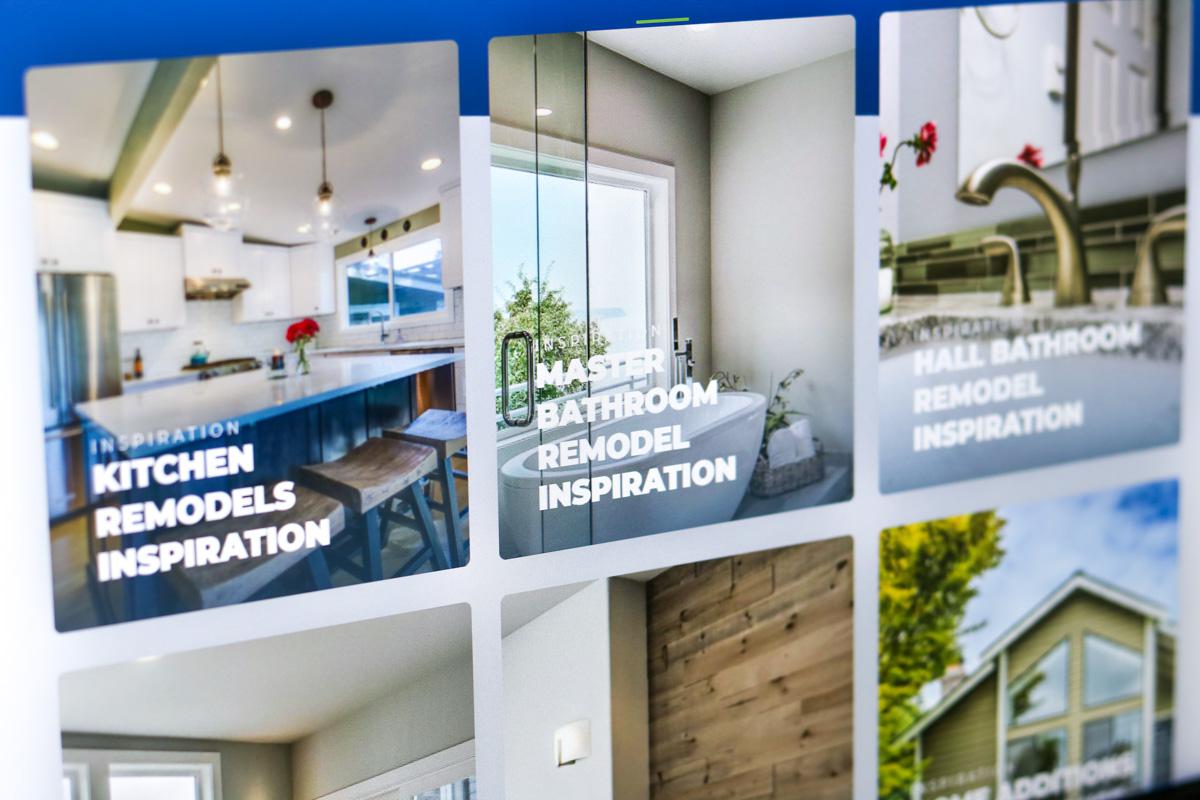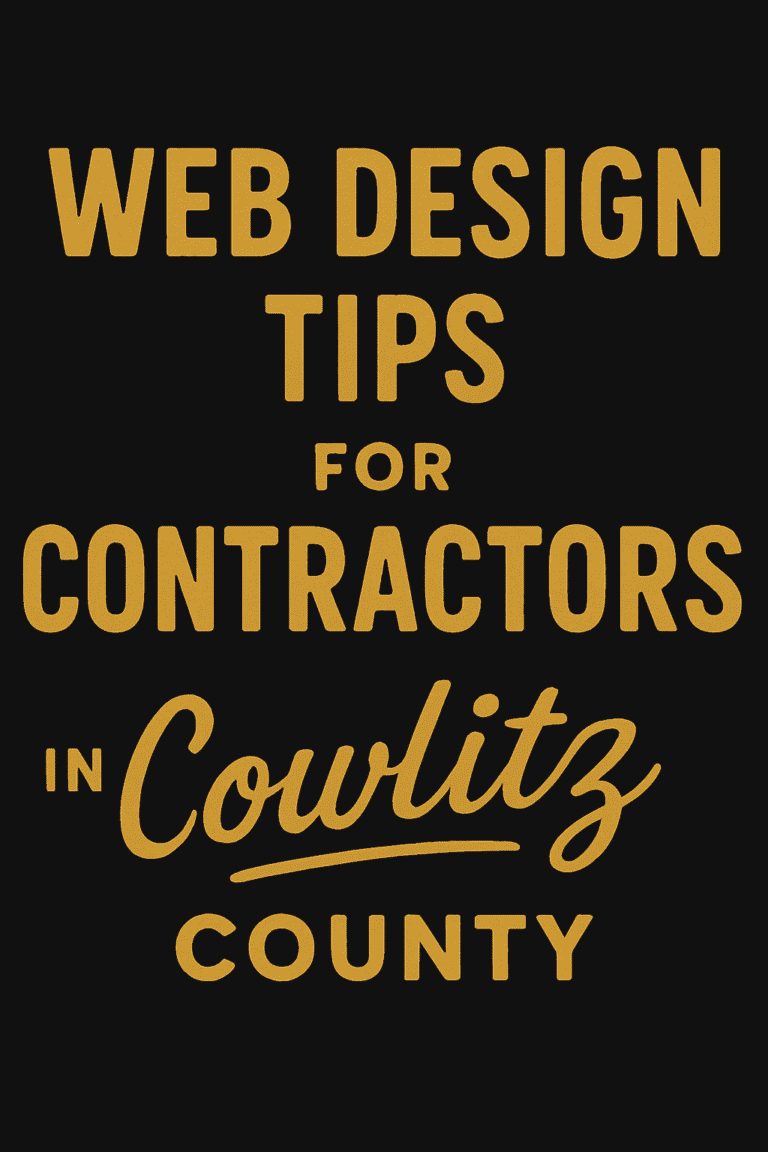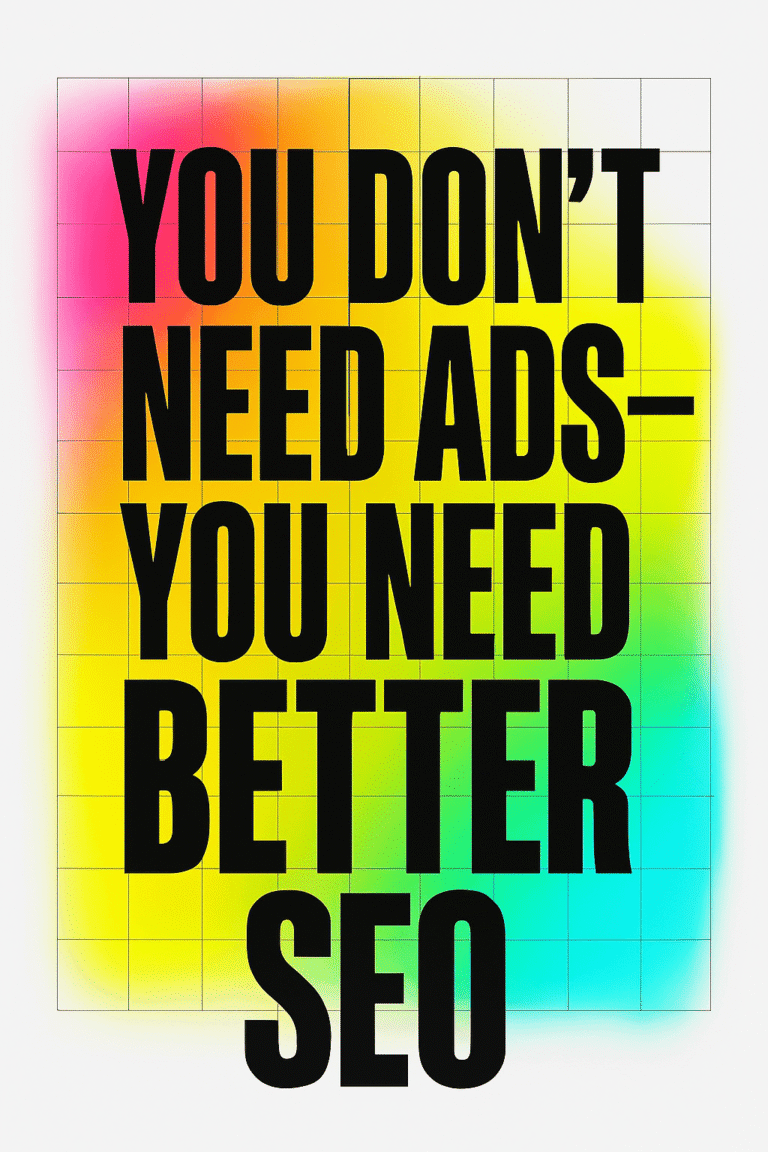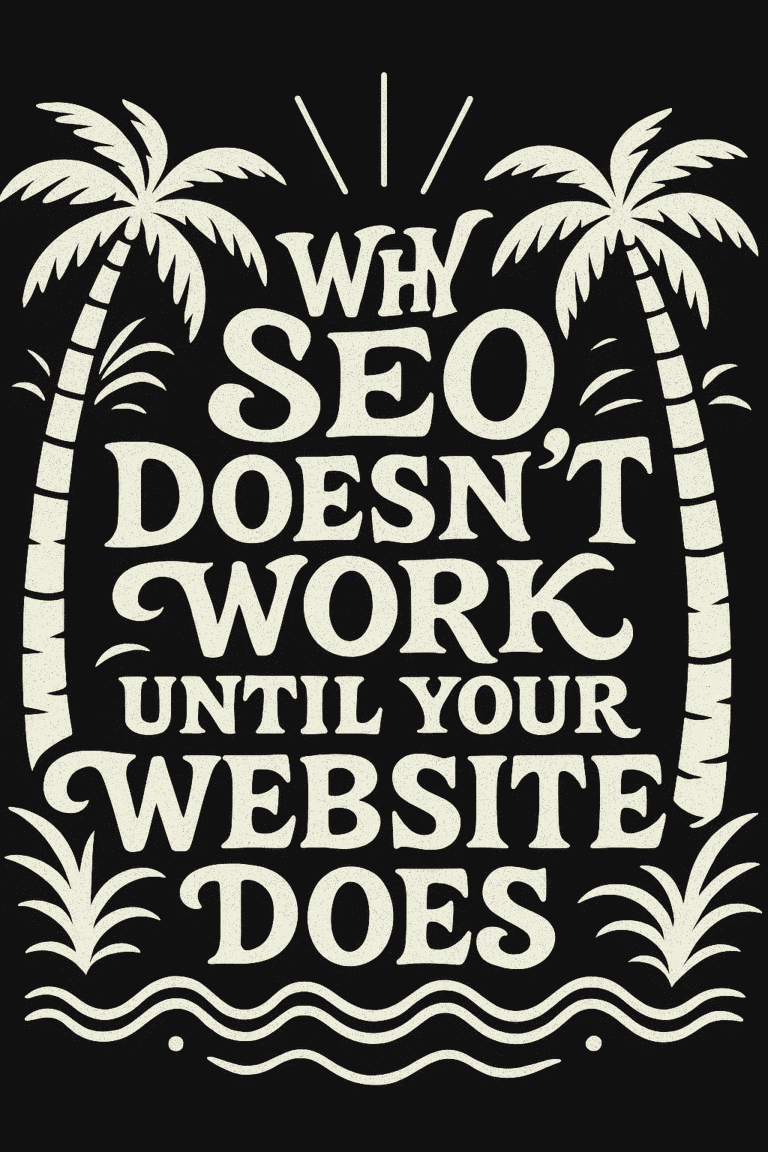
Everything in your business must have a purpose. Would you agree?
Your business cards allow you to easily hand off your contact information. Should that person need your services in the future, they have your information to take the next step. Your billboard advertisement allows people to be exposed to your business and hopefully, call. The radio advertisement should do the same.
Your website is no different.
Often, it can be easy to treat website like an online brochure. I see all the time. Boring websites that have sparse information and no calls to action are prevalent.
You must do better than that if you’re going to have any results online.
When speaking with prospective web design customers, one of the initial questions we ask is: why does your website exist? Really? There are billions of websites out there and yet, you decided your business needed to join in?
And since the average business website is ineffective, this can lead business leaders to assume that “websites don’t do much for our company.” Well, sure. How much effort and forethought went into your website? Let me guess, you copy and pasted your latest brochure, placed it online, and expected something amazing to happen? You shouldn’t be surprised at your results.
Let’s look at how a website can become more effective and bring new sales opportunities. You know, as any marketing investment should.

Making Your Website More Effective
It all starts with goals.
What do you want your website to do for your business? If you can’t answer that clearly and concisely, you have no business jumping into a website project. Otherwise, you’ll make whimsical contradictory decisions throughout the project. In the end you’ll have a website, but I won’t do anything for your business.
A common goal for a website is to bring new sales opportunities. If that’s the case, then every decision we make should support that goal. For instance, let’s say your sales manager has a wonderful idea that’s going to knock the socks off your competitors. This idea will incorporate 3D animation, something of the likes the world has never seen before.
Awesome. Let’s take a step back to see how this aligns with your goal.
Who are your customers? Who is your ideal customer?
Oh, they are middle-aged men of high net worth that have minimal technical abilities. They can check email, use Word, and operate their iPhone. If a pop-up appears on a website, they can’t ever seem to close it and become increasingly frustrated while using the Internet in general. As a matter of fact, they believe the Internet and computers are the bane of our existence.
Now, let’s look at your sales managers wonderful idea.
Do you think this idea is going to work well with your ideal customer?
No, it’s not. The only person it’s going to impresses is your sales manager. The problem is your sales manager isn’t the ideal customer buying your products or services.
I see this all the time. It can be difficult to separate your preferences from your ideal customers preferences. But it’s important to differentiate between the two.
If you want your website to be successful, all your decisions need to support the primary goal. I can’t stress this enough.
Considering the primary market in the example above, it’d be a better idea to keep things simple and easy to use. No bells and whistles. No shiny objects. KISS (keep it simple stupid).
Moving on.

What would you like your website to do for your business?
Another question I like to ask is: if your website could do anything for your business, what would that be? Is that someone picking up the phone and calling? Is that someone filling out a form and getting a white paper? Is that someone purchasing something?
As you can tell, this question goes right in line with the goal for the website. Sometimes, it might be the same answer. But either way, it usually teases out expectations and helpful information.
Someone doesn’t purchase a hammer because they want to hammer. They want to put a nail in the wall. And they don’t just want nail in the wall. They want a picture hung in the hallway. They are proud of this picture. They want their family and guests to see this photo. They’re also proud of their home and they want their home to be welcoming to the family and guests. This photo on the wall aligns with that vision and helps them create this reality.
The same goes for your website. I think most businesses would be perfectly happy if they could achieve their goals without a website. But in this day in age, a website is often a major asset to an organization.
Now, let’s look at various tactics to help make your website more effective:

Contact Information
This is usually something left for contact page, right? Is that a bad idea? Not entirely. But, let me explain:
Your contact information does need to go on the contact page. But that’s not the only place it needs to go.
Your contact information should be readily available on the website at any time. Often, this is accomplished by having it in the header (top of the website), in your content (like a phone number, directions, etc.), or in your footer (bottom of the website).

The last thing you want is for your visitors having to work to find your contact information. If someone’s ready to take the next step, your contact information needs to be ready. If it’s only on your contact page, that’s not good enough. You can’t expect that everyone’s going to find that, even if it seems foolproof. Have you ever looked at a piece of software or a website trying to find a feature, link, etc. and you just can’t find it? Even though you know it’s there? Then, your spouse comes along and says it’s right there. This is the same concept. Don’t assume your visitors know where to find everything.
With your contact information and calls to action, you can never be too redundant. That is, unless you’re putting up multiple pop-ups or similar, and ruining the visitor’s experience.

Calls to Action
Imagine this:
You have a visitor on your website that is reading about your services. They like what they’re reading and are getting excited about working with your business. Finally, they decide they want to take the next step, but they don’t know what that is. Do you want your customers to be uncertain about how to take the next step in doing business with your company?
You need to constantly ask for the prospect to take the next step. You need to clearly define what that next step is. Do you want them to fill out a form, chat with an agent, or pick up the phone? What do you want them to do?
Similarly, you need to give the prospect a reason to take the next step. Is there a limited time offer? Can you help them solve their problem immediately? Asking them to contact your business is a good step in the right direction. But generally, it’s better to have a good reason why the prospect should contact you right this moment.
Contacting Your Business Should Be Painless
You should always make it extremely easy for your visitors to contact your business.
You may have a phone number, but that may not be enough. Everyone is busy and picking up a phone isn’t always a reality. They may be at work or watching the kids, and a phone call is not possible.
Instead, you should provide an easy and painless way for your prospects to contact you.
This can be an easy to use contact form, only asking them for their name, email and message. Or could be a live chat on the website. If your business line can accept text messages, state that (call or text us).
Both methods are easy and don’t require a lot of effort from your customer.
You could argue whether that’s good or bad for your business, but at the end of the day the easier it is for prospect to contact your business the better. Of course, there is caveats to this depending on the industry and business itself, but generally you can’t go wrong with the above. I think most businesses would rather have the struggle of better qualifying leads than no leads at all.

Pre-Sales Opportunities
Expecting a prospect to purchase something from your business isn’t always the best first step. Often, it’s more of a longer sales process.
In that case here are ideas:
Newsletter
I know what you’re saying, is this advice 10 years old? Yes and no.
Sure, if you’re asking someone to sign up for your fabulous newsletter, you might not get the best results. But you can reframe this and look at a newsletter as something that can enrich your customers lives.
For instance, ask your prospects to sign up for it your VIP list. If they are on this list, they will receive exclusive coupons, tips and tricks, and the latest industry news that they won’t find anywhere else.

The goal here, is to not only add value to your customers lives, but also continuing to communicate with them after they have left your website. One of the last things we, as online marketers want is to have a qualified prospect go to your website, click around, and leave to never be seen again. We want these prospects to have the opportunity to hear from your business again. And one way to do that is to offer value. By the way, you must follow through with this promise of value. If there is none, then you may as well have never asked for them to join your newsletter to begin with.
For your business, building a list is crucial. You don’t want to continually hunt for new prospects every single day of the week. You want to be able to have a list of people that are interested in your products or services. That way you can stay in contact and market to them.
If you don’t have a list, you’re making business harder than it needs to be.

An exchange of value
You can also offer something one time that is of value. It can be a valuable guide or checklist that the prospect values. It could be continual value in a six-part series. All of this in exchange for their email address so that they can access the item that they’re interested in.

Social Proof / Review
It’s crucial that prospective customers hear from your happy, existing customers. This provides them a chance to see what other people think of your product or service.
When you include social proof, it should be in a story form. Not a one-off “great company” type of review. It should explain where your customer was before they found your business and the struggle they faced. It should explain how your product or service helped them solve that struggle initially, and how it continues to improve their life today.
This allows the prospect to relate to these reviews and better understand if your product and service is right for them. They are currently in the exact same spot where your happy customer used to be. They want to be your happy customer and by using your product or service this will allow them to get there.

Again, simple reviews with a couple of words is not going to cut it. You need to have stories with these reviews. And please, allow these words to be what comes out of your customers mouths or keyboards. Do not write, influence or reward your customer reviews beyond a simple thank you note. Be a good human.
Also, if you can get permission to use the customers photo and name (possibly location) it will greatly help the authenticity of the review. This will make the review much more impactful. Seek approval before doing this of course.

Show Your Work
If you’re a service business, you better have the latest and greatest projects that your business has been working on. If you don’t have a portfolio or a portfolio that has your latest work, you are handicapping your business.
I’ve found that service businesses especially can become lazy in this effort and it hurts them. Take photos of your work, document the project and if you can, create case studies around the project and place it online. This showcases the quality of your work for prospects and provides them with a good look at your processes.
It’s great that you talk about how good your business is but put the same amount of effort in your portfolio. Allow your prospects to measure the quality of your work and to decide if they’d like to work with your business.

News / Articles / Blog
Finally, having a place that has the latest information from your business allows prospects to not only learn more about your business, but also that your business is alive and active. It can also be a great place to add value to your prospects by educating them.

This feature also has tremendous search engine optimization (SEO) benefits that I won’t go into here.
Want a better website?
We’d love to help you. Please call or text us at (360) 450-3711 or request a quote.






